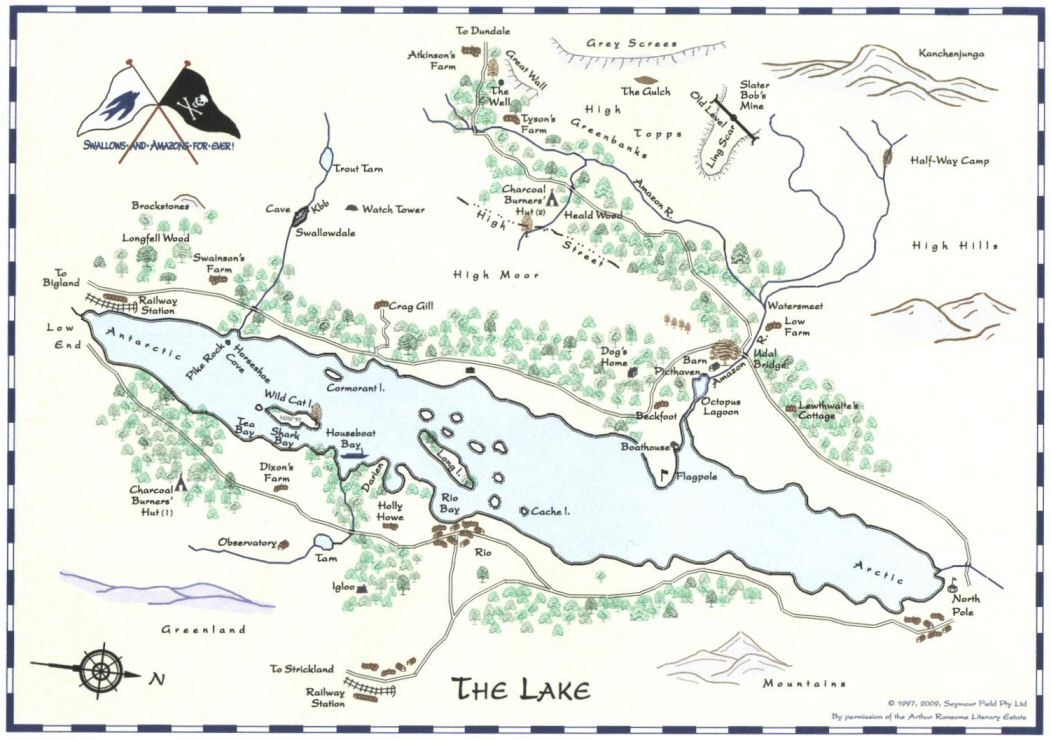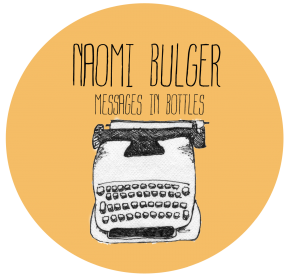 Books with maps in the front are the best kinds of books. Am I right?
Books with maps in the front are the best kinds of books. Am I right?
I have been re-reading my way through the childhood classics, of late. I’ve done Harry Potter, The Northern Lights, Narnia, A Wrinkle in Time and The Owl Service. I’ve dipped my toes into the young adult worlds of Tomorrow, When the World Began and The Hunger Games. Now, I’m reading the Swallows and Amazons books.
Were these in your childhood? Written in the 1930s, they tell the story of four siblings who head out on a little sailing boat called ‘Swallow’ and camp on an island all by themselves. There, they meet two more little girls with a sailing boat of their own, ‘Amazon,’ who call themselves pirates and wage a good, fun war on the ‘Swallows’.
These books are a modern mother’s worst nightmare. For one thing, the four kids are out on the water without life jackets and without adults. The littlest boy, Roger, is only seven, and he can’t even swim. They light fires, carry knives, cook their own meals and camp alone on an otherwise-deserted island. In the second book, their boat capsizes, sinks, and the children have to swim for their lives. And the mother still lets them keep camping alone.
When the children wrote to their father to ask permission to take the sailing boat out to the island, he sent them a telegraph: BETTER DROWNED THAN DUFFERS IF NOT DUFFERS WON’T DROWN. Better drowned than duffers? I think NOT. Madeleine, you can be as big a duffer as you choose. Six times over. Just please don’t drown.
Yet there is something glorious about these books. Not only about the freedom and abandon of their adventures. But also of the responsibility that is just assumed children hold: they keep their tents tidy, they share their food rations, the older ones make sure the younger ones get to bed on time (most of the time).
Make a safer world for kids
National Kidsafe Day is coming up on 23 October, a day when we do our darndest to learn about the key dangers facing our children, and figure out how we can keep their precious little lives safe.
Did you know that more children die from injury than of cancer, asthma and infectious diseases combined? I’m talking about accidents that should be avoidable, like falls from windows, drowning in shallow water and strangling on blind cords.
I’m using National Kidsafe Day to educate myself about the environment in which Madeleine will grow up, and what I can do to protect her from accidents and injuries.
But with all this in mind, how do I ensure Madeleine lives a life full of adventure, of exploration, and of independence? How can I find that balance? This is something I think I will spend her lifetime trying to figure out.
Disclaimer:
I am participating in the National Kidsafe Day Bloggers Competition to support and promote child safety, along with the added bonus of chances to win prizes. All opinions are my own and not those of Kidsafe. To find out more or to enter the competition, please visit www.kidsafeday.com.au.

Have you read “Last Child in the Woods?” Do….It’s all about keeping kids connected to nature and exploration. Safety is obviously so important but we also want out children to have trust in the world and feel safe while being safe.
Thanks Gill, I will look out for it!
It is a fine balancing act – but I do believe that with the right guidance they can have fun and stay safe
Actually I think our boys have good guardian angels looking out for them – the amount of crazy things they have done and they are still in one piece!
I like how the children look out for each other (in the book) Be good to see that in the real world. That is what makes our kids safe – safety in numbers, and best friends looking out for each other.
When I was a kid, we were always out roaming the countryside. We swam in the river, unsupervised, we found a “swamp”, building sites, caves, climbed trees, built fires (Once we fled, thinking we had set an entire forest on fire (we hadnt)). I fell in the river a couple of times, out of my depth (I couldnt swim). Life was great. I wouldnt change that childhood for the modern one where kids cant roam free, but have to stay on paths, usually from school to some “practice” to home.
I can understand that parents worry, but kids are stronger than you think, they need the space to learn by mistakes, and yes, one or two might die every now and then – but that happens too in our modern system. The question is whether you would prefer your kid drowns while sailing to the North Pole or is hit by a car on his way to band practice (or perhaps shot by some kids who went “postal” because of our modern upbringing).
In the Swallows and Amazons, the parents did the right thing, because they had brought up their kids to be self-reliant, and the younger kids were put in charge by the older, more responsible kids. Because the older kids had been treated as self-reliant, they were able to look after and teach the younger kids.
We forget that kids reach maturity at about 12-14; thats when Nature says they are old enough to breed and bring up kids. In many parts of the world, kids are adults at that age. Old customs also show that – the Bar Mitzvah is at 13, for example. Just because we have pampered them like housecats and extended their childhood (extended education isnt bad, dont get me wrong), does not mean that if we take away that artificial support, that they dont have the inner strength to look after themselves like adults can.
A fifteen-yr-old boy is as able to handle a sailing ship as a 45-yr-old man. And yes, sometimes the boat might capsize, regardless of age.